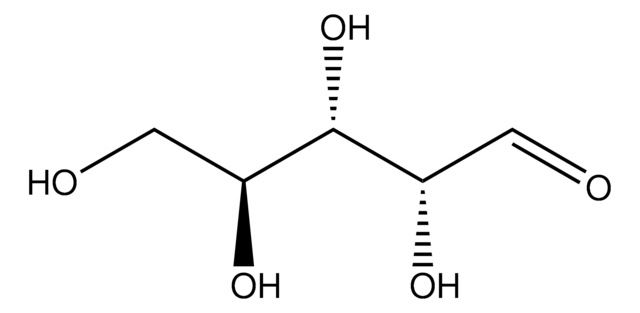G0750
D-(+)-Galactose
≥99% (HPLC)
Synonym(s):
Galactose
About This Item
Recommended Products
biological source
bovine (Ruminant- Cow, Ox, Buffalo)
Quality Level
Assay
≥99% (HPLC)
form
powder
technique(s)
HPLC: suitable
impurities
≤0.1% glucose
color
white
useful pH range
5.0-7 (25 °C, 180 g/L)
mp
168-170 °C (lit.)
solubility
H2O: soluble 100 mg/mL, clear, colorless
storage temp.
room temp
SMILES string
OC[C@@H](O)[C@H](O)[C@H](O)[C@@H](O)C=O
InChI
1S/C6H12O6/c7-1-3(9)5(11)6(12)4(10)2-8/h1,3-6,8-12H,2H2/t3-,4+,5+,6-/m0/s1
InChI key
GZCGUPFRVQAUEE-KCDKBNATSA-N
Looking for similar products? Visit Product Comparison Guide
Application
- as a component of galactosyltransferase labeling buffer.
- as a supplement in MRS broth for the growth of thermophilic lactobacilli
- to induce the expression of uncoupling protein (UCP) in yeast transformants
Biochem/physiol Actions
Other Notes
Storage Class Code
11 - Combustible Solids
WGK
WGK 3
Flash Point(F)
Not applicable
Flash Point(C)
Not applicable
Personal Protective Equipment
Choose from one of the most recent versions:
Already Own This Product?
Find documentation for the products that you have recently purchased in the Document Library.
Customers Also Viewed
Our team of scientists has experience in all areas of research including Life Science, Material Science, Chemical Synthesis, Chromatography, Analytical and many others.
Contact Technical Service







